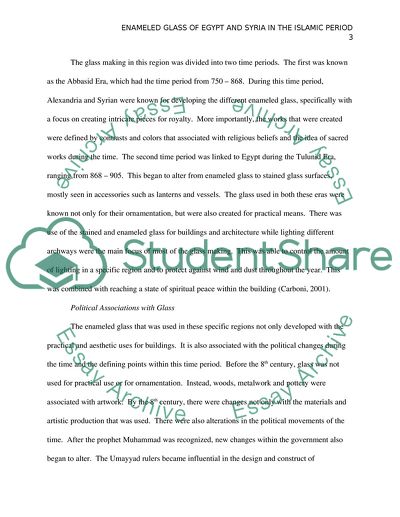Cite this document
(“Discuss the evolution of enamelled glass in medieval Egypt and Syria, Essay”, n.d.)
Discuss the evolution of enamelled glass in medieval Egypt and Syria, Essay. Retrieved from https://studentshare.org/miscellaneous/1564456-discuss-the-evolution-of-enamelled-glass-in-medieval-egypt-and-syria-focusing-on-carbonis-book-glass-for-the-sultans
Discuss the evolution of enamelled glass in medieval Egypt and Syria, Essay. Retrieved from https://studentshare.org/miscellaneous/1564456-discuss-the-evolution-of-enamelled-glass-in-medieval-egypt-and-syria-focusing-on-carbonis-book-glass-for-the-sultans
(Discuss the Evolution of Enamelled Glass in Medieval Egypt and Syria, Essay)
Discuss the Evolution of Enamelled Glass in Medieval Egypt and Syria, Essay. https://studentshare.org/miscellaneous/1564456-discuss-the-evolution-of-enamelled-glass-in-medieval-egypt-and-syria-focusing-on-carbonis-book-glass-for-the-sultans.
Discuss the Evolution of Enamelled Glass in Medieval Egypt and Syria, Essay. https://studentshare.org/miscellaneous/1564456-discuss-the-evolution-of-enamelled-glass-in-medieval-egypt-and-syria-focusing-on-carbonis-book-glass-for-the-sultans.
“Discuss the Evolution of Enamelled Glass in Medieval Egypt and Syria, Essay”, n.d. https://studentshare.org/miscellaneous/1564456-discuss-the-evolution-of-enamelled-glass-in-medieval-egypt-and-syria-focusing-on-carbonis-book-glass-for-the-sultans.


